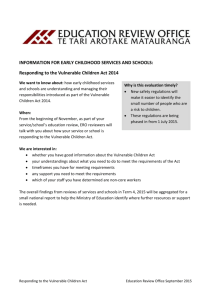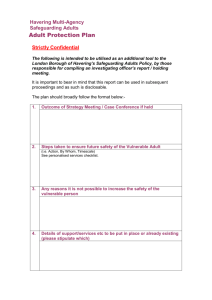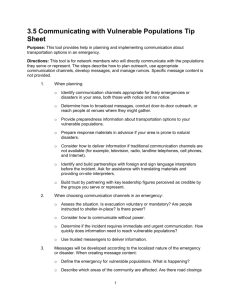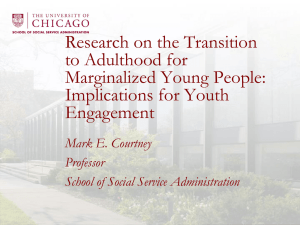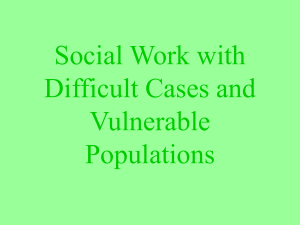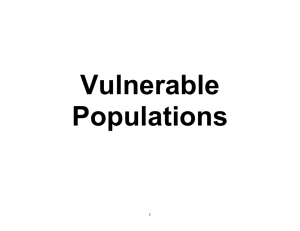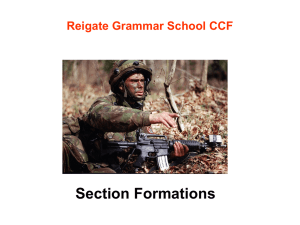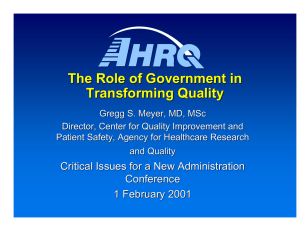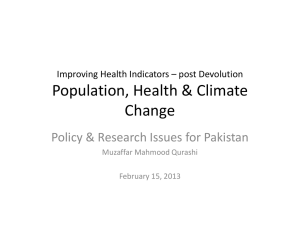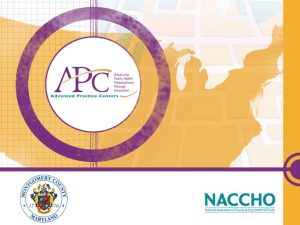Ch 10: Vulnerable populations and the transition to adulthood
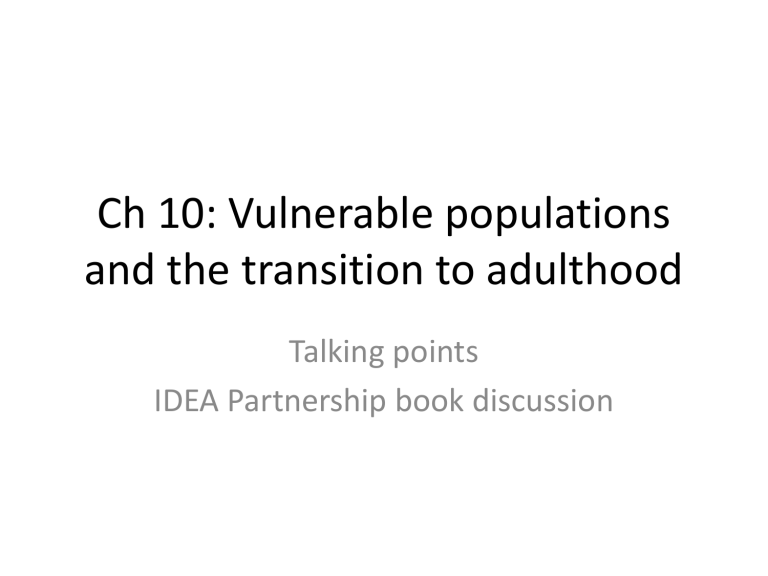
Ch 10: Vulnerable populations and the transition to adulthood
Talking points
IDEA Partnership book discussion
Vulnerable
• Youth described as vulnerable when they fit into the following categories or services providers:
– Mental health
– Foster care
– Juvenile justice
– Criminal justice
– Special education
– Physical disability or chronic illness
– Runaway and/or homeless
Commonalities during the Transition to Adulthood
• As these seven vulnerable groups struggle during the transition to adulthood to get work and to start families of their own, the particular profile of outcomes varies across these groups,
– Over-Represented Groups
– Diversity of the Populations
– Overlap among the Vulnerable Populations
– Poor Outcomes in Many Domains
• Although varied; they also share much in common.
7
– males, the poor, and youth of color are over-represented in every group.
– youth in every group vary widely as to the seriousness and type of problem or need.
– population overlap—that is, that members of one group often belong to another group as well.
– members of every group have poor outcomes in many domains.
– every group the factors that contribute to success are the same.
Youth services end abruptly
• Services provided to children and youth end abruptly
• Ending is determined by an arbitrary number
(age)
– In all systems, state assumes less responsibility for youth once they’ve reached the cutoff age
• Services continue to be needed
Problem areas in the transition to adulthood for vulnerable youth
• Eligibility criteria change
• Inadequate funding for transition services
• Lack of coordination across service systems
• Professionals lack adequate training on youngadult developmental issues (as well as supports and services)
Counting?
• Difficult to count the number of individuals served
– Many youth move within multiple service systems
(comorbidity)
– The issue of maintaining confidentiality vs. the desire to see what is happening across systems in order to identify gaps and overlaps in these supports and services systems.
Outcomes
• Outcomes are poor for youth from these vulnerable populations
– Education
– Employment
– Family formation
Implications
• Funding streams should consider transition for all youth
• Re-vamp pre-service education in human service professions (education, social work, counseling, psychology, etc.)
Research is needed
• Need a more accurate count: identify common ways to follow youth from one system to and through other systems
• Research on the successes—there are some success stories out there for models to replicate
Models
• Fostering Connections Act of 2008
• Shared Youth Vision Initiative
